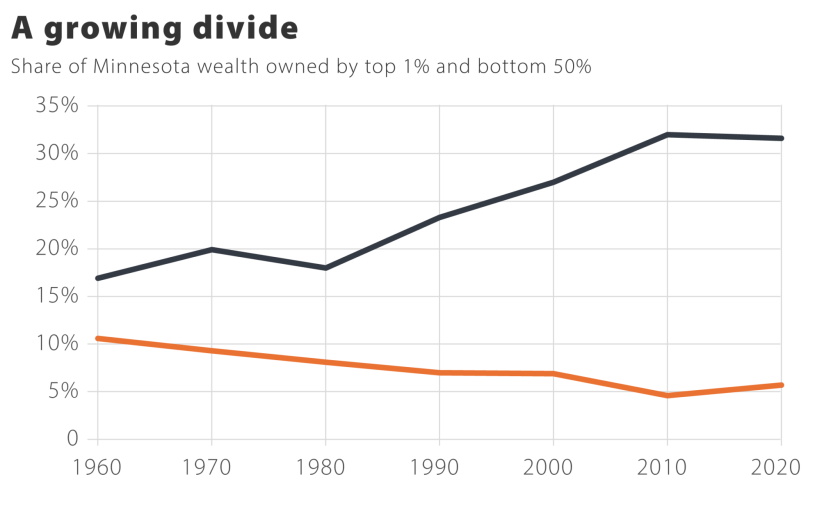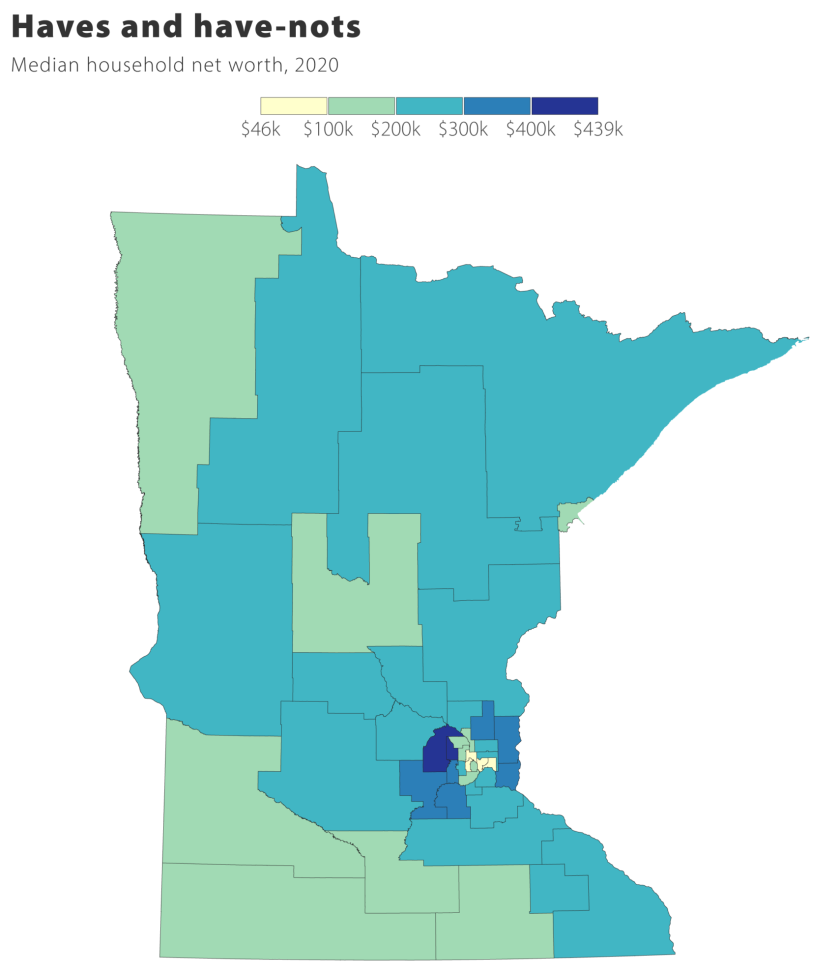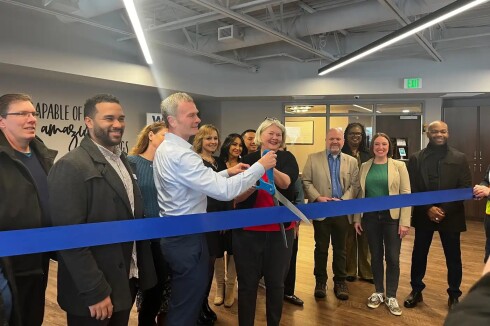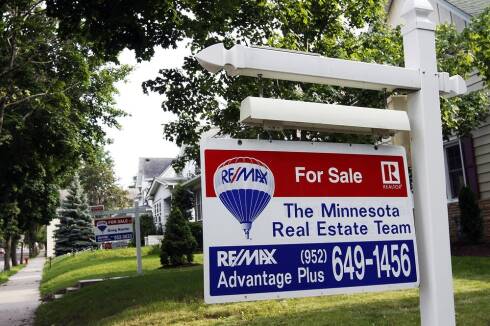Minnesota's household wealth — mirroring national trends — has become more concentrated over the past six decades, a new database of household wealth.
In 1960, for instance, the bottom 50% of families owned about 10% of the state’s total wealth, while the richest 1% had about 17%, according to data collected by Geowealth US.
ADVERTISEMENT
But by 2010, the share of wealth owned by the bottom 50% fell by roughly half, while the wealth of the richest 1% more than doubled. Those shares changed little from 2010 to 2020.

The estimates in the database are based the federal Survey of Consumer Finances , which asks respondents about their assets and debts, as well as the Census’ American Community Survey , which measures demographics, income and home ownership.
Behind the numbers
The rise in wealth inequality is driven by many factors, including the loss of high-paying blue collar jobs; the growing concentration of white-collar jobs in coastal metropolitan areas and big advanced economies like the Twin Cities; and changes to the tax code favoring the already-wealthy.
Wealth inequality in the United States is greater than in most other democracies . Racial wealth disparities , driven in part by decades of discriminatory policymaking, are often staggering.
Minnesota’s racial disparities are among the worst in the nation , partly due to the state’s long history of redlining , or denying mortgages and other financial services to non-white people. Those century-old policies reverberate in maps of neighborhood inequality made today.
The richest and poorest Minnesota communities are all concentrated in the Twin Cities metro.
The wealthiest communities in the Twin Cities are roughly 10 times richer than the poorest ones, according to the data.
ADVERTISEMENT

Median households in parts of the west metro — including Lake Minnetonka, Plymouth and Maple Grove — have a net worth well over $400,000. Those in parts of south Minneapolis and the western part of St. Paul have closer to $40,000.
In the richest areas of the country, like Palo Alto or the New York City suburbs, the typical family is worth well over $1 million. In the poorest communities, which are in New York, Houston and Milwaukee, the typical family has only $18,000 in assets.
“People who grow up in wealthier places can reap benefits that span generations,” Tom Kemeny, one of the database’s compilers, explained in a recent commentary . “As a result of property taxes and philanthropy, wealthier communities have greater resources for schools, health care, transportation and other infrastructure.”
This story was originally published on MinnesotaReformer.com.
______________________________________________________
This story was written by one of our partner news agencies. Forum Communications Company uses content from agencies such as Reuters, Kaiser Health News, Tribune News Service and others to provide a wider range of news to our readers. Learn more about the news services FCC uses here.











